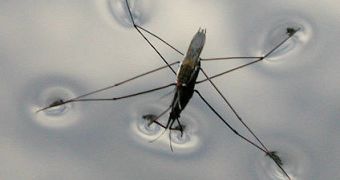It is generally believed that mosquitoes basically lay their eggs in just about any body of water that they can find. A team of researchers from Tulane University in collaboration with colleagues from several North Carolina State universities however, revealed that yellow fever mosquitoes require precise concentrations of certain chemicals in order to breed in open water containers. This is the first study ever to identify the chemical compounds sought by this particular species of mosquitoes while laying its eggs.
About 100 countries around the world are, to some extent, infected with dengue fever, a disease rather similar to malaria but found in the urban areas of tropical countries. Thus, the new findings could turn out to be very useful in creating targeted lures that may help control, at least partially, the spread of this disease.
"No one has developed lures that target these species of mosquitoes because no one has been able to identify and isolate the compounds necessary to mass produce them into a commercially available trap. It's also important to note that these lures would target egg-laying mosquitoes, which are especially dangerous because they have fed on blood at least once, and could be infected with a virus," says Dawn Wesson, associate professor of tropical medicine at Tulane University and co-author of the study.
According to the results of the research, during reproduction the yellow fever mosquitoes (Aedes aegypti) search waters containing certain concentrations of fatty acids and bacteria resulted from the decay of leaves, plus several other organic compounds, preferably inside human-made containers distributed over a great surface area.
As soon as the chemicals attracting the yellow fever mosquito to lay its eggs were identified, the research team turned to investigating the concentrations that make for a favorable environment for the birth of the new insects. A high concentration of fatty acids and methyl esters appear to influence the mosquito to lay fewer eggs, while a concentration between 10 nanograms and 30 milliliters provides the optimal conditions required for the insects to lay their eggs.
This suggests that the concentration of fatty acids and methyl esters is in direct relation to the microbial content of the water, which is how mosquitoes know how favorable the conditions are to the development of their offspring.

 14 DAY TRIAL //
14 DAY TRIAL //